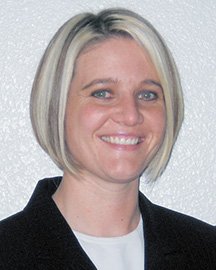Q&A

Inside The Futures World
Want to find out how the futures markets really work? DeCarley Trading senior
analyst and broker Carley Garner responds to your questions about today’s
futures markets. To submit a question, post your question at https://Message-Boards.Traders.com.
Answers will be posted there, and selected questions will appear in a future
issue of S&C. Visit Garner at www.DeCarleyTrading.com.
Her books Currency Trading In The Forex And Futures
Markets; Commodity Options; and A Trader’s
First Book On Commodities, are available from FT
Press.
A “CRUDE” LOOK BACK (PART 2)
In honor of the 30th anniversary of Stocks & Commodities, we are reviewing the evolution of crude oil futures throughout the previous three decades. Last issue, we discussed price changes and historical seasonal patterns; this time, we will focus on order entry logistics, new technology, and most important, what we know about these topics to improve your odds of successful speculation.
In the early 1980s, screen trading seemed to be more of a pipe dream than a reality. Futures and options orders were executed via a system known as open outcry, or arbitrage (“arb”) trading, which is a system of hand signals used to communicate buy and sell orders from trading pits. Simply, open outcry trading is organized chaos. From the outside, it looks like a group of intoxicated fans at a rock concert, but a closer look reveals that the yelling and hand waving is an efficient means of price discovery.
At the time S&C was born, all domestic crude oil futures transactions occurred on the New York Mercantile Exchange in New York City. Traders around the world would call (with an actual phone, maybe even a rotary dial) their orders in to their brokers, who would call a trading desk located on the NYMEX floor to place the trade. A placed order would prompt the floor clerk to send a runner into the trading pit with an order to execute, or if the trading desk phone were close enough to the pit, they would signal the order to a filling broker in the pit. Once the order was filled, the process would reverse.
In today’s markets, computers run the show. Many traders enter orders via an online trading platform or even their cell phones. Those using full-service futures brokers to buy or sell futures contracts, or options, are communicating orders via text message, instant message, or email.
The migration toward technology, away from traditional open outcry, has increased the speed and efficiency of order execution and fill reporting for energy traders. In the 1980s, crude oil traders often had to wait minutes, even hours, to discover the price at which their orders had been filled. Electronic traders receive notification of an executed order within a fraction of a second. However, positive developments also come with baggage.
Electronic trade execution in the futures markets began in the 1990s and paved the way for high-frequency trading (HFT) (that is, automated computer-generated order execution) in the 2000s. HFT is the use of quantitative computerized algorithms to analyze incoming market data and implement trading strategies. Positions entered by these programmed computers are typically offset in a brief period of time.
HFT and electronic trading in crude oil futures has influenced the markets and the way prices fluctuate. In fact, some argue the 2007 run to the mid-$150s per barrel and the subsequent collapse to under $40 was exaggerated by HFT programs and the market access to the retail public brought about by technology and electronic screen trading.
Whether the changes that electronic trading has brought are constructive is arguable. In many cases, the added market liquidity could mean better fill quality, but in other circumstances, it might mean larger price swings due to one-directional trades by the programmed computers or bandwagon speculators.
Humans tend to look at change in a negative context; however, I’m not convinced the disappearance of trading pits and the emergence of electronic trade execution are positive or negative — just different. In my opinion, traders should focus on how and where the market is going rather than why it is getting there.
Regardless of execution method, traders are, in essence, competing with all other market participants. This is true whether it is an algo-trading system, a specialist on the trading floor, or someone in their pajamas clicking away with a mouse. It is naïve to assume that it is possible to completely level the playing field.
Before electronic trading, the advantage was with the floor brokers standing in the NYMEX pit in Manhattan. They were among the first to receive market moving information; more important, they were able to execute trades faster than anyone else simply because they were in the pit. Other buyers and sellers were required to go through the process of calling orders to a broker and waiting for a “paper ticket” to travel to the pit and back with a fill. Unfortunately for open outcry traders in New York, the advantage of standing in the trading pit is all but gone.
As markets have moved toward electronic and over-the-counter trading, the edge has shifted away from floor brokers and market makers. The advantage is now leaning toward high-frequency traders; again, I don’t believe the market is any better or worse off, it is different — and investors must learn to adjust.
Even if high-frequency traders were banned from the marketplace, there will almost always be somebody or something with more resources and knowledge than you do. For instance, Warren Buffett isn’t a high-frequency trader, but he certainly has the means to conduct fundamental research better than the rest of us.
Happy 30th anniversary, S&C!